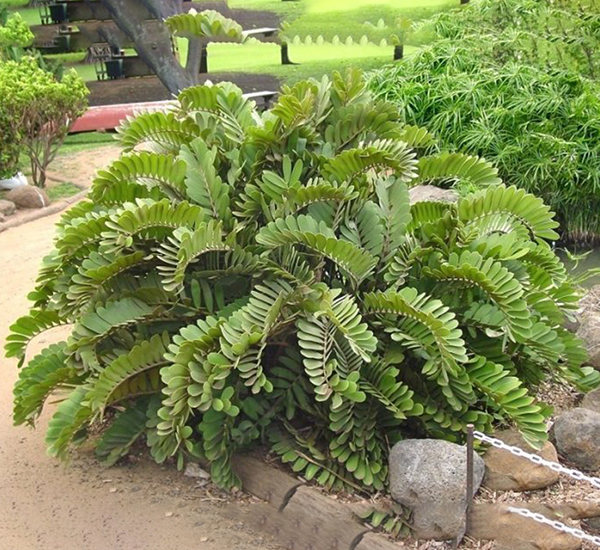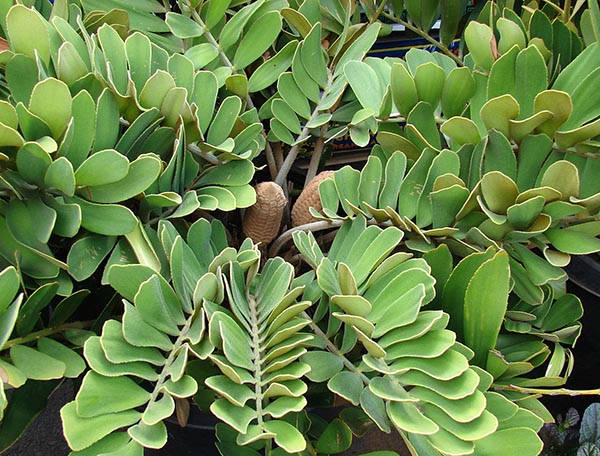Cardboard Palm (Zamia)
Zamia, or Cardboard Palm, is an exotic evergreen plant. Cardboard Palm only looks like a palm. It's a Cycad native to Mexico and is much easier to please indoors than a real palm because of its tolerance of dry air.
Common Name: Cardboard Palm
Botanical Name: Zamia furfuracea
Cardboard Palm only looks like a palm. It's a Cycad native to Mexico and is much easier to please indoors than a real palm because of its tolerance of dry air.
Most Zamia species are found in warm, humid, tropical rainforest habitats, growing in the forest understory. However, many species are still fairly adaptable, performing quite well in cultivation, especially in subtropical areas. All species need good drainage and protection from the cold.

Place it in a sunny spot, and you'll find it needs little attention to thrive.
This shrub-like plant is a semi-succulent that holds water in its thick trunk, so it won't mind if you occasionally forget to water. Don't allow the soil to get too dry, though, or this plant may drop its leaves.
Cardboard Palm is about as low-maintenance as you could hope for. You'll never need to prune, because it grows in a rosette from the trunk, creating a full, leafy plant -- from the base to the top. The stems can grow 2 to 4 feet long and are covered with thick, fuzzy leaflets that feel dry and papery like cardboard.
Male or female cone-like structures will form on separate Z. furfuracea plants. Don't bother collecting the seeds because they're not viable.





